For the past decade, I’ve called Central America home and tourism a career, that alone makes me pretty fortunate. In that time, I’ve fished the Pacific Ocean and Caribbean Sea too many times to count, I’ve participated in international billfish tournaments and battled with huge tarpon here in Costa Rica, I’ve fished from the Canal to the Hannibal Bank in Panama, and I’ve scoured the flats of Belize with my fly rod in search of a tailing bonefish and permit. While I recognize that I’m incredibly blessed to be living in the tropics and sport fishing in some of the world’s greatest locations, the real perks to the job are the people you meet and the amazing nature and wildlife you get to experience along the way. In the travel industry, especially one that is so dependent on and affected by Mother Nature, there is always something to learn, something that surprises you, and best of all there is always something new that amazes me and brings me right back to my roots of why I love traveling and fishing in this part of the world so much. I had one of those experiences last month in Panama, which may very well have been the best fishing trip of my life. Read on for my Fishing Report from Panama’s Mothership – June 2015.
When learning about sport fishing in Panama two of the first names you’ll hear are the Zane Grey Reef and the Hannibal Bank, two true heavyweights in the world of big game marlin and tuna fishing. As you’d expect, some of Panama’s best fishing lodges are found in those destinations willing to house anglers from all over the world in hopes of landing the catch of a lifetime. As worthwhile and memorable as that type of vacation can be, the concept of a ‘mothership’ operation always peaked my interest. The idea of a floating fishing lodge agile enough to take you right to the fishing grounds while at the same time being stable and comfortable enough to keep you out at sea all week was something I always wanted to offer my own clients, and of course experience myself firsthand.
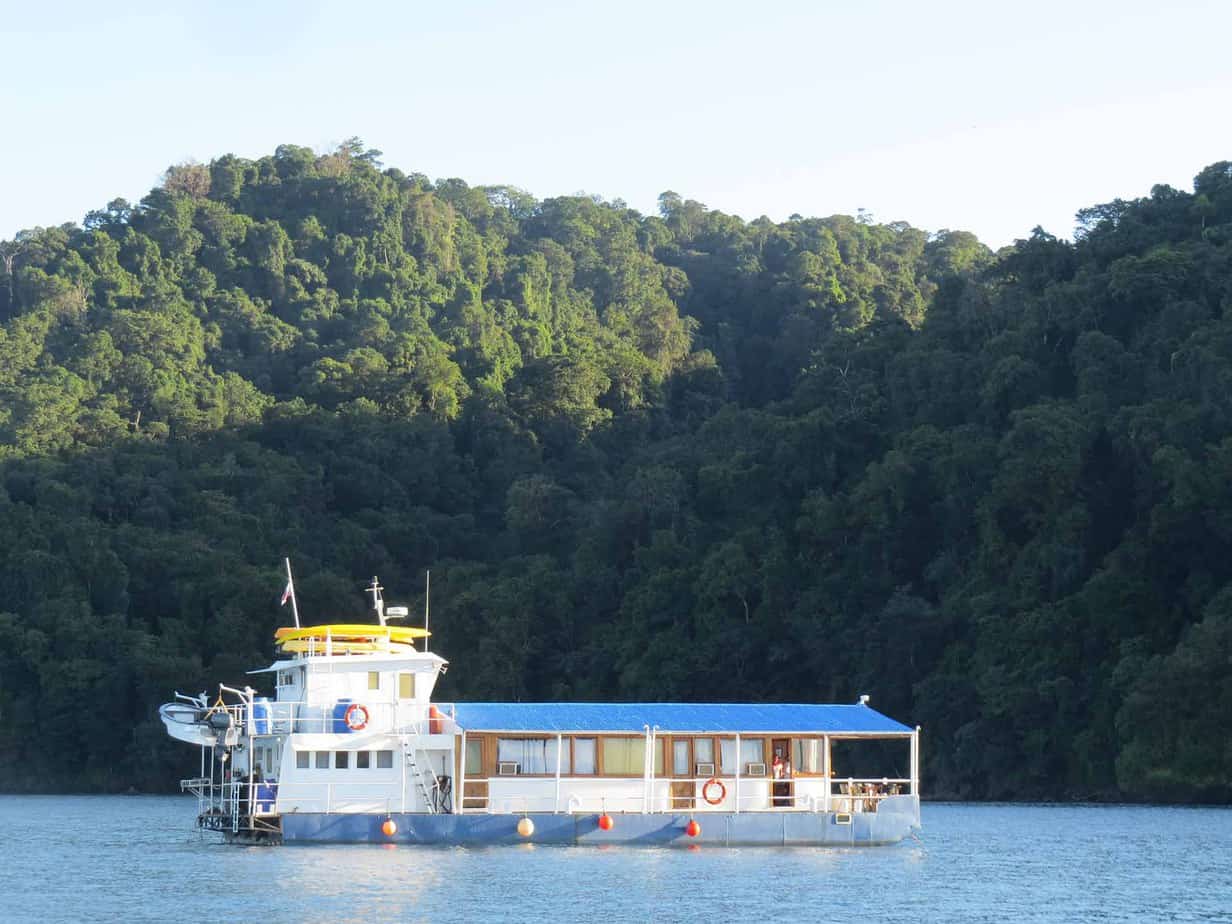
Luck had it that I met Mike Augat, owner of Panama’s best mothership operation, at the Fred Hall Outdoor Show in March and we instantly hit it off. A legendary fishing guide, explorer, and tour operator himself, Mike purchased the mother ship two years ago after being its top booking agent for the previous 16 years. He’s tall (6’4″) & tan, has wide shoulders, bears claws for hands, and piercing blue eyes – and he LOVES to fish. He has a presence about him that makes you want to drop a line down the nearest sewer grate just to say you were able to fish with him. He invited me to join him aboard his mothership last month, and realizing it was the trip of a lifetime I brought my 65 years old dad with me as the perfect Father’s Day gift.
My dad has been a boat captain for 50 years in the Midwest, but his forte is racing sailboats while I’ve always been the fisherman of the family, so I was pretty confident he had no idea what he was in for. This sentiment was reinforced further when during a pre-vacation check-up his local doctor in Wisconsin started sharing his own stories from his fishing trips to Mexico. The doctor sent home a handful of his favorite fishing pictures with my dad, and he even gave him his personal fishing belt to use on the trip to Panama. The problem is the doctor’s photos were mostly of 10-15 lb peanut dorado and small bonito caught from a panga, so as all good sons do I arrogantly quipped that we’d use that fish as bait in Panama and advised him to leave the tiny plastic fishing belt at home. I also told him to leave his two zip-lock bags of bug spray and malaria pills at home and assured him he wouldn’t need two pairs of sandals AND two pairs of shoes – but hey, if I’m stubborn in my 30’s imagine what he’s like…
Off to Panama we went, though thanks to American Airlines we had a six-hour mechanical delay, missed our connection in Miami, missed our first night in Panama City, and didn’t arrive until 1 PM the following day. This was either a bad omen to start the trip or merely the Travel Gods’ way of testing your mettle before rewarding you with epic fishing, so I decided it was the latter and we trucked on. On the first day in Panama City, we were able to shoot north to the Caribbean port town of Colon, or the north side of the Panama Canal, and were able to witness some history. For the past seven years, the Panama Canal has been undergoing an extensive expansion, and we just so happened to be there during the six-day period when they were actually filling the new canal with water from Lake Gatun. That is to say, they were nearly done and were now filling the entire project with millions of gallons of water and we were able to witness that unique time in the project. At night we walked around the French colonial part of Panama City, Casco Viejo, one of the country’s many UNESCO World Heritage sites, and enjoyed pizza and cold beer in the Plaza Bolivar.
The next morning we flew to western Panama and the second biggest city in the country, David, where we were met by Mike’s driver Luis. A former regional and national boxing champ and the director of all the land-based operations of the mother ship, he’s a guy you don’t want to mess with! After having a quick breakfast with Mike, Luis took my dad and I to the marina just fifteen minutes away where we got our first glimpse of the mother ship. We quickly dropped off our luggage and jumped into our fishing boat to enjoy an afternoon of inshore fishing as the barge made its way to the first set of islands where we’d spend our first night. After an hour long run out of the mangroves we arrived at Isla Parida, a popular island about seven miles off the coast. I’m a popper addict, so I couldn’t wait to grab the Shimano Saragosa’s on board and start chucking my popper towards the rocks. I had many strikes, and about 15 minutes in landed our first fish, a sierra mackerel. My dad meanwhile was casting a red and white rapala and was clearly reacquainting himself with the nuances of a spinning reel. As I kept getting strikes by needle fish and mackerel I was worried my dad might not catch any fish and might be in for a long week, then BOOM! He shouts “Whoa!” as his rod doubles over, then 10 minutes later he lands beautiful rock snapper which was undoubtedly the biggest fish of his life. I was proud of him, and from then on we went on to land 10+ fish spread out amongst seven different species. While I loved releasing a nice cubera snapper on my popper, the highlight was definitely my dad’s 30 lb roosterfish – another first for him. Anchored in front of a sun-drenched beach, we met the barge about 20 minutes before sunset and just in time for cocktail hour. The game was on, we were hooked, and this was just Day 1 aboard the mother ship!
Day 2 was our first deep sea, blue water day as we got up early and made the long run out to the famed Isla Montousa. Part of the big three in western Panama’s offshore fishing grounds, Isla Montousta and Coiba Island sandwich the Hannibal Bank which sits halfway between the two. We shared our boat today with arguably the top female guide in the Florida Keys and founder of Florida Sportswoman, Brittany Novalsky. If she isn’t already she will soon be fishing royalty, her immense skill and easygoing personality were a welcome addition to our boat. We were together on the boat today because we had a common goal – more like an obsession – we wanted tuna. Captain Jose informed us that the day before the tuna didn’t rise up until late afternoon, so we spent the morning trolling live bonito in hopes of raising a marlin. The lady in the blue dress was not home, so we switched gears and used the rest of the bonito as chunk bait and went bottom fishing. Brittany and I were dropping our baits, but this was new to my dad so first mate Juan was showing him the proper technique. It wasn’t long before Juan’s rod bent over the rail so he handed it to my dad to do the heavy lifting. My dad had barely gotten the rod into his own hands when the perfect combination of a larger than normal wave and a hard run straight down by the mullet snapper knocked him off his feet and flat on his back. I’ve been on boats with him for nearly 30 years and I’ve never seen him lose his footing! Luckily it happened so quickly Juan hadn’t moved an inch so he grabbed the rod seemingly out of midair while my dad struggled, humbled, to his feet. As soon as I knew only his pride was injured I chuckled and was instantly reminded of the conversation we had a week prior when I told him to leave the cheap plastic fishing belt at home because he had no idea what he was in for.
We continued to catch good sized rock snapper and mullet snapper with regularity, but we were all waiting for the call that someone spotted tuna. It finally came from one of the local commercial boats, so we picked up our gear and ran 30 minutes south. We were joined by three other boats, and as soon as we got there the fish were spooked and went deep again. We then ran east, then back north, all in search of dolphins which would lead us to tuna. Soon we spotted some dorsal fins so Brittany and I went to the bow of the boat to get a better look at the dolphins playing in our bow wave. As we got closer we both remarked “Those are HUGE dolphins” and then it sunk in – they were pilot whales! Mike has been fishing in Panama for 17 years and says he’s never seen them, and unfortunately thinks they may have been to blame for the extra-spooky tuna. The tuna bite wasn’t happening for us so we made our way to the majestic Coiba Island – our home for the week. It was only late afternoon so we slowly moved along the coastline casting poppers and rapalas toward the rocks as the mother ship trudged her way to a safe bay where we’d spend the night. We landed several jacks and needlefish, but the real treat was my last fish of the day. Something blew up my popper, and as I reeled it closer to the boat Brittany remarked that she thought she saw yellow. Sure enough, a lone yellow-fin tuna hanging out very unexpectedly by the rocks took my popper and made it home to the mother ship as a sashimi appetizer for everyone aboard. It wasn’t quite the tuna/popper experience we were looking for, but I wasn’t about to complain.
Day 3 was a real treat, my favorite of the entire trip. Mike joined my dad and me on the boat today and proceeded to fill our ears with fishing knowledge and great stories. I don’t think there is a guy who loves fishing in Panama more than him, and if there are better anglers in the world you’d probably only need one hand to count them. Mike was anxious to put us on the fish after yesterday’s relatively slow day (we still caught 10+ fish), so we started off trolling Rapalas about 200 yards from shore. Mike was saying he has days where once you find the school of jacks you can catch them until your arms tire, and sure enough, we quickly got into jack crevalle, horse-eye jack, barracuda, and even a small black-tip shark. Next, we moved to some islands that are known to be a good spot for Cubera Snapper, and shortly after my dad hooked up and landed one within 15 minutes. Next, we moved back to Coiba Island but this time to a different stretch of coast that had a river mouth, so we trolled live blue runners with circle hooks in hopes of tempting a roosterfish. It only took about 15 minutes for that to happen, my dad hooked and landed his second rooster of the week at the stern while I was chucking poppers like a madman on the bow. On one retrieve I had THREE roosterfish following the same popper!
One of the legends I had heard about Coiba Island is that there is now a resident population of ‘Pacific Tarpon‘ that have made their way through the Panama Canal and established a home on the Pacific. Albeit rare, there have been a few releases this year but Mike assured me they aren’t as numerous as one would hope. OK OK, fair enough, but it would still be fun to see one… After we wore out our welcome with the roosterfish we switched back to trolling Rapalas, which was my least favorite method of the week. My dad and I took sides on the back of the boat and manned our spinning reels, and then boom, my dads got hit. He reacted quickly and started to reel, then someone shot a missile out of the Pacific Ocean that silenced us all – for a second anyway – then the excited profanities came out in both English and Spanish. The missile was of course a tarpon, and a huge one. It only gave us one jump before he tossed the under-matched rapala about fifteen feet away, but it was easily north of 120 lbs. WOW.
If you are still with me, it’s now only about 10:30 AM on Day 3 so we decided to head offshore to try and find the dolphins and the finicky tuna they travel with. The day was gorgeous, bright, and sunny with some of the clearest blue water I’ve ever seen on the Pacific Ocean. We found a pod of spotted dolphins after 20 minutes of searching and saw one tuna quickly dart to the safety of the depths. We kept following them, Mike and I at the bow of the boat with our bails open ready to launch poppers in the direction Captain Jose yelled. Sometimes one fish can make a day, and I got mine. After about 10 minutes of this, I must have hooked the last procrastinator tuna who hadn’t left yet, so my trip was officially a success – yellow-fin tuna on a popper.
Mike had the idea to stop for a swim to cool off at his favorite secluded beach, and what a great idea it was. Located on the back side of one of the many small islands found just off Coiba Island’s coast, you got the idea that not many people had laid eyes on this beach much less set foot on it. We all eagerly jumped into the 80-degree water to ‘cool off’, but even that feels great when it is 90 degrees and sunny. I’ve seen most of Central America and I’d honestly put the beauty of this white sand beach up against any in the world, it was absolutely gorgeous. What a great spot for lunch. After lunch we trolled nearby and landed our third and fourth roosterfish of the trip, then Mike and I busted out our 8 wt fly rods and spent the rest of the afternoon waving our magic wands trying to tempt Jacks to chase our clousers. By 5 PM the mother ship still hadn’t anchored in her new bay yet so we fished our way around yet another small island. My dad ended up releasing a huge hound fish – basically a Needle Fish on steroids. While needlefish are smaller-bodied and have nasty teeth, this hound fish was thick like a barracuda and had the oddest yet beautiful set of iridescent blue teeth on him. As my dad grabbed it to pose for a picture Mike warned “Careful, he’ll bite your face. Seriously.” My dad nervously chuckled and tightened his grip – smile!
Back on the mother ship by sunset, we took a hot shower in one of the two bathrooms then made it out to the deck for a fresh sashimi appetizer and cocktails. As we were eating dinner our mate Juan came up to Mike and told him to come here. Mike leaves our sight for five seconds before excitedly racing back to tell us they had a crocodile at the back of the barge. We all ran back there to see, then let out a collective “Whoa….” This wasn’t just a crocodile sighting, this was a 13 ft long crocodile that was clearly interested in the activities of the mother ship and/or the people on board. The mates, most of them local kids in their 20s, had the bright idea to quickly catch jacks on small jigs, rig them up by their tails (without any hooks) on a different rod, then proceeded to play ‘catch me if you can’ with the crocodile. The croc loved every minute of it too, he wasn’t going anywhere and seemed to enjoy the game (not to mention a free meal). So what do you do on a 70′ barge fifty miles out to sea with no phone or internet? You fish hard, enjoy great food & drinks with good people, then you tease a crocodile all night long.
On Day 4 we quickly caught our live bait for the day, then Captain Jose and Juan took us to the ‘wahoo spot’. They changed out the fluorocarbon leaders for wire leaders and rigged up two big Yo-Zuri lures. It took about 10 minutes for the first wahoo to hit, which somehow was lost boatside before we could get a gaffe into him. I was so disappointed, it had been a looong time since my last wahoo, I thought that was going to be our only chance. It wasn’t. Minutes later the 60 lb braid on my Saragosa started screaming and I knew we had a good fish. After a nice fight I landed the biggest wahoo of my life, another incredible catch during our week. After an hour at the wahoo spot we did a mix of inshore casting & popping, bottom fishing, and a bit more trolling. We landed several more snappers and added two more species to our tally – a dorado and a beautiful blue-fin trevally.
Day 5 was sadly our last day, so we said our goodbyes to Mike and his wonderful staff and motored away from the mother ship for the last time. As is par for the course this week, when you leave the mother ship you don’t simply go back to your hotel or an airport on the mainland – you fish your way back! We trolled back towards the mainland aiming for a new set of well-known islands we hadn’t fished yet, Islas Secas. Along the way there were tons of current lines and garbage flows, so we snagged another nice 20 lb Dorado and saw a few more. We found a huge tree in one of the currents so I asked Jose to stop for a bit while I rigged my 8 wt fly rod. The water was so clear it was easy to see the baby amberjacks and small triple tail sheltering beneath it, which made for the perfect fly fishing situation. After a few follows I landed one amberjack then we continued on to Islas Secas where we beat the water to a froth with the rapala and popper combo. We landed more jacks, snappers, needlefish, and a rainbow runner. At long last, the sun was starting to get low on the horizon so Jose said it was time to take the lines out and we headed back to the mainland.
The mothership’s claim to fame, other than they of course have you stay at the fishing grounds fifty miles offshore unlike all the land-based operations, is that they offer you forty species of game fish to target throughout your week. My dad and I landed 50+ fish in five days and checked 21 of those species off our list. What is amazing about that is we weren’t consciously trying to target different species after one was caught, we were simply fishing the normal spots and that’s how many we came across. We also were not necessarily trying to rack up a huge fish count either, the point of this trip was to see the mother ship operation in action and watch how & where these guys worked, we got into schools of jacks or a hot mullet snapper bite where we could have reeled in fish until our biceps failed us. I’ll never forget the feeling of motoring through the mangroves back to land on our last day – amazed at how quickly the week went by and wishing we had more time. For six days a 70′ floating lodge filled with strangers far off the coast of Panama in shark and crocodile-infested waters was home and now it felt like I was being torn away from it. Gone was the daily routine of watching the sunrise over Coiba Island at 5:30 AM while Mike sipped his morning coffee, spending 10-12 hours fishing on the beautiful Pacific Ocean, eating right-out-of-the-water seafood we caught each night, and sharing stories and great laughs over dinner and drinks. We fished hard, experienced amazing wildlife, made new friends, and we didn’t think about work or even turn on our computers for an entire week. After logging 50+ hours of fishing that week with Mike and his stellar crew we also became even better anglers ourselves – could you ask for anything more out of a week-long vacation?
[divi_shortcode id=”285285″]

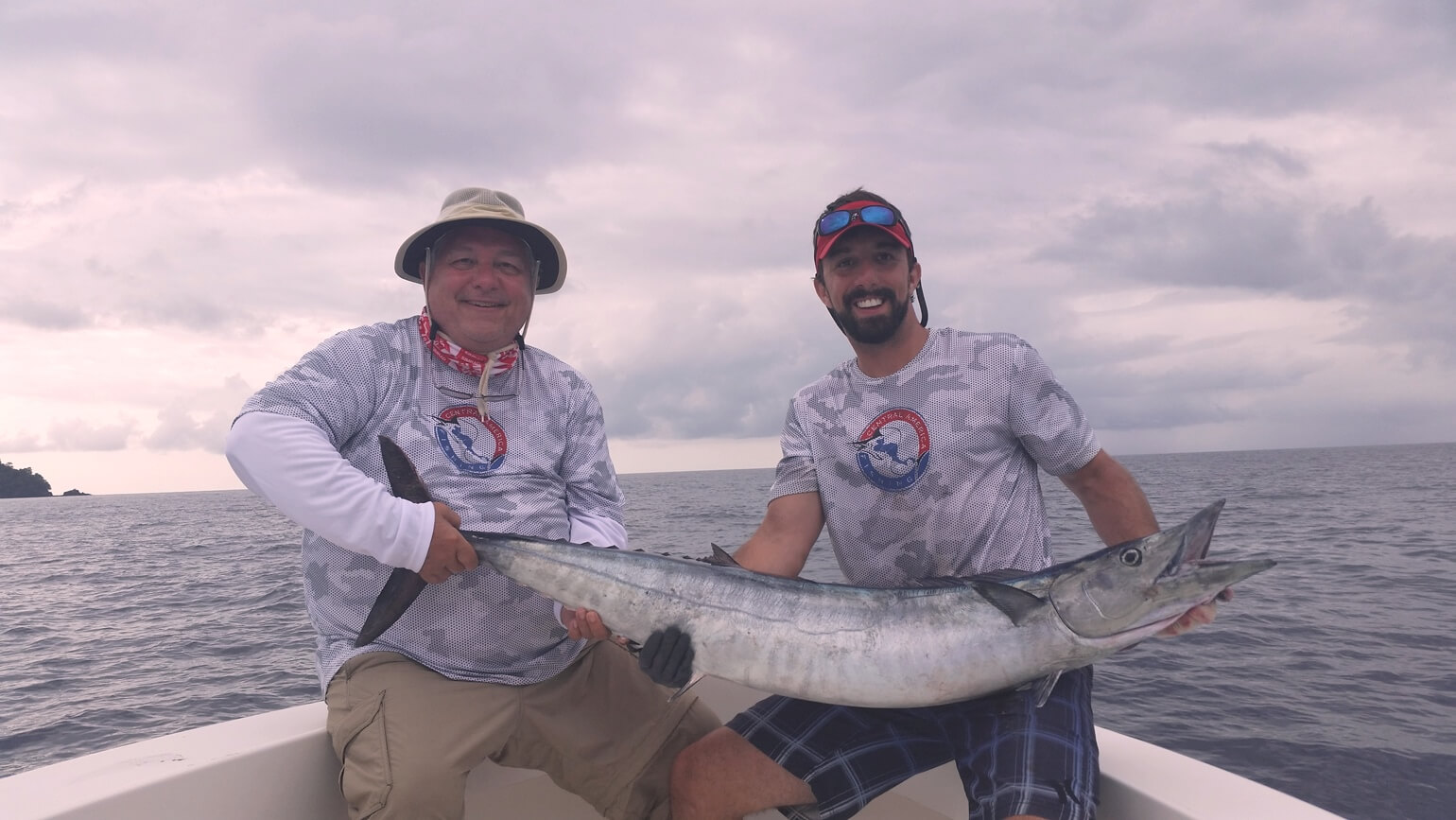
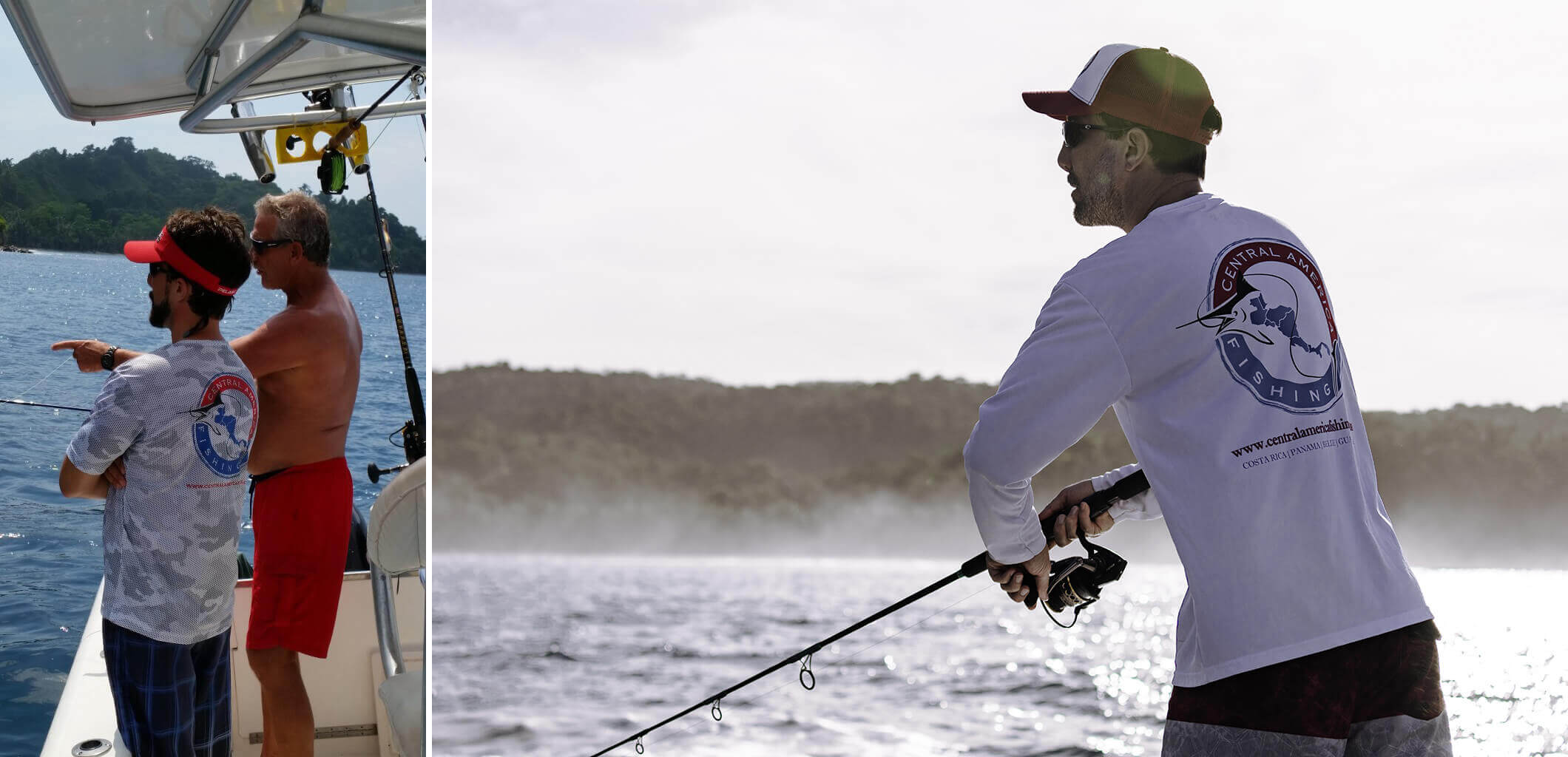
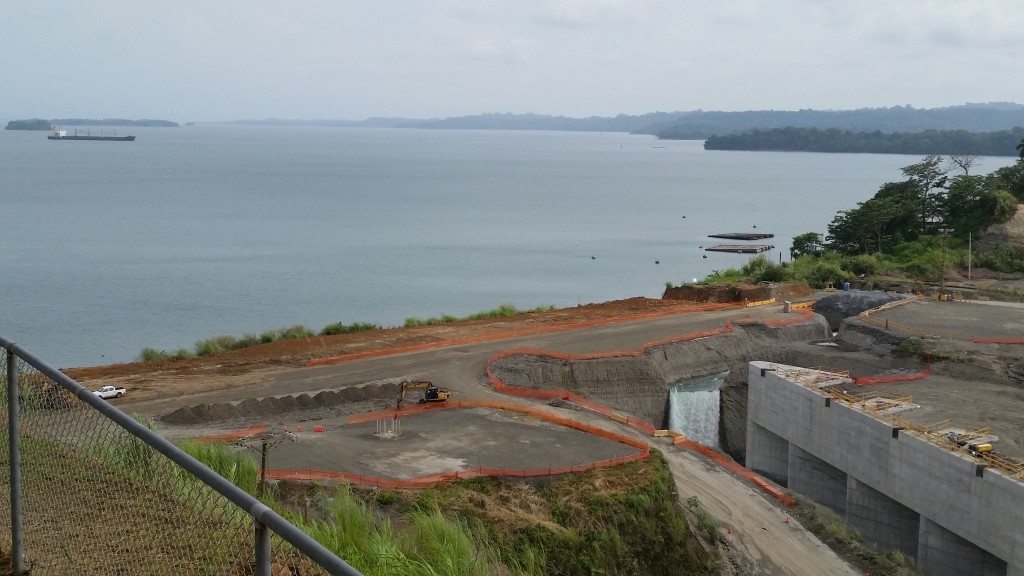
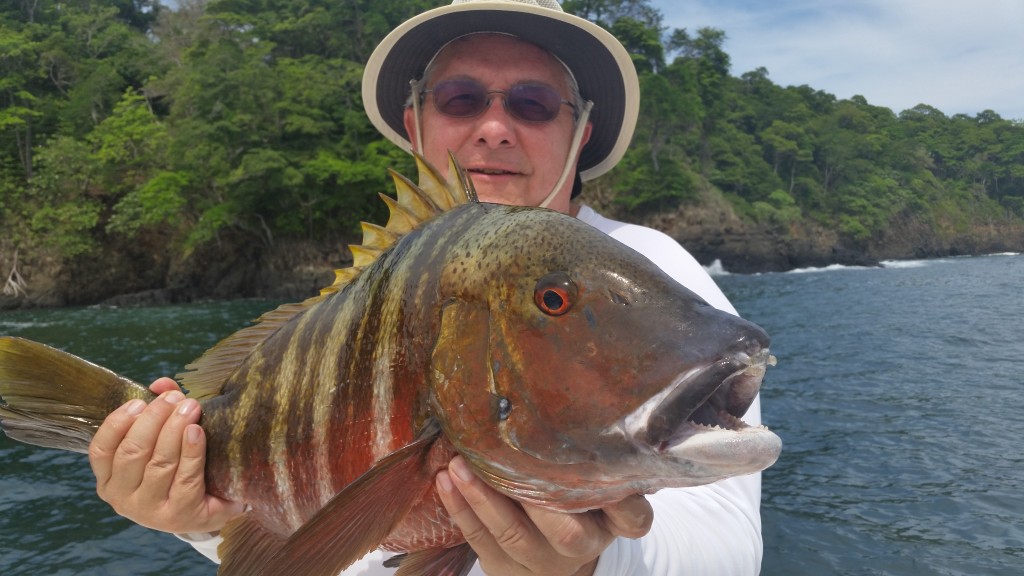
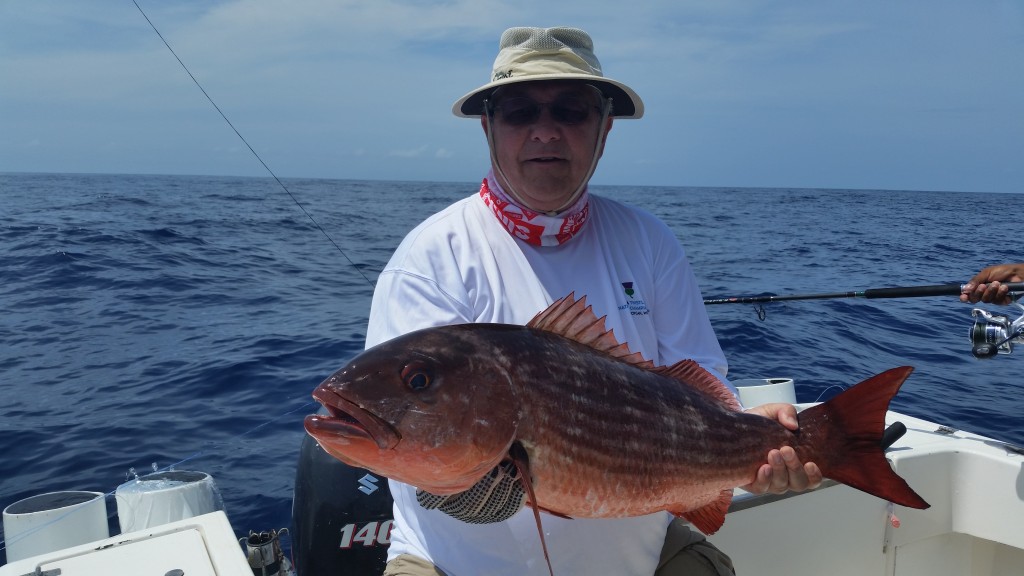
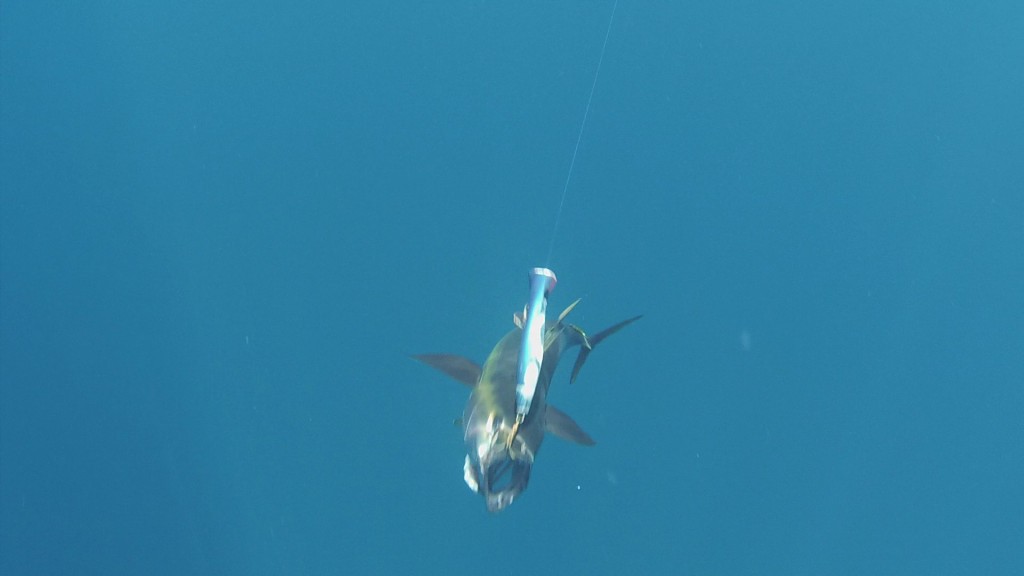
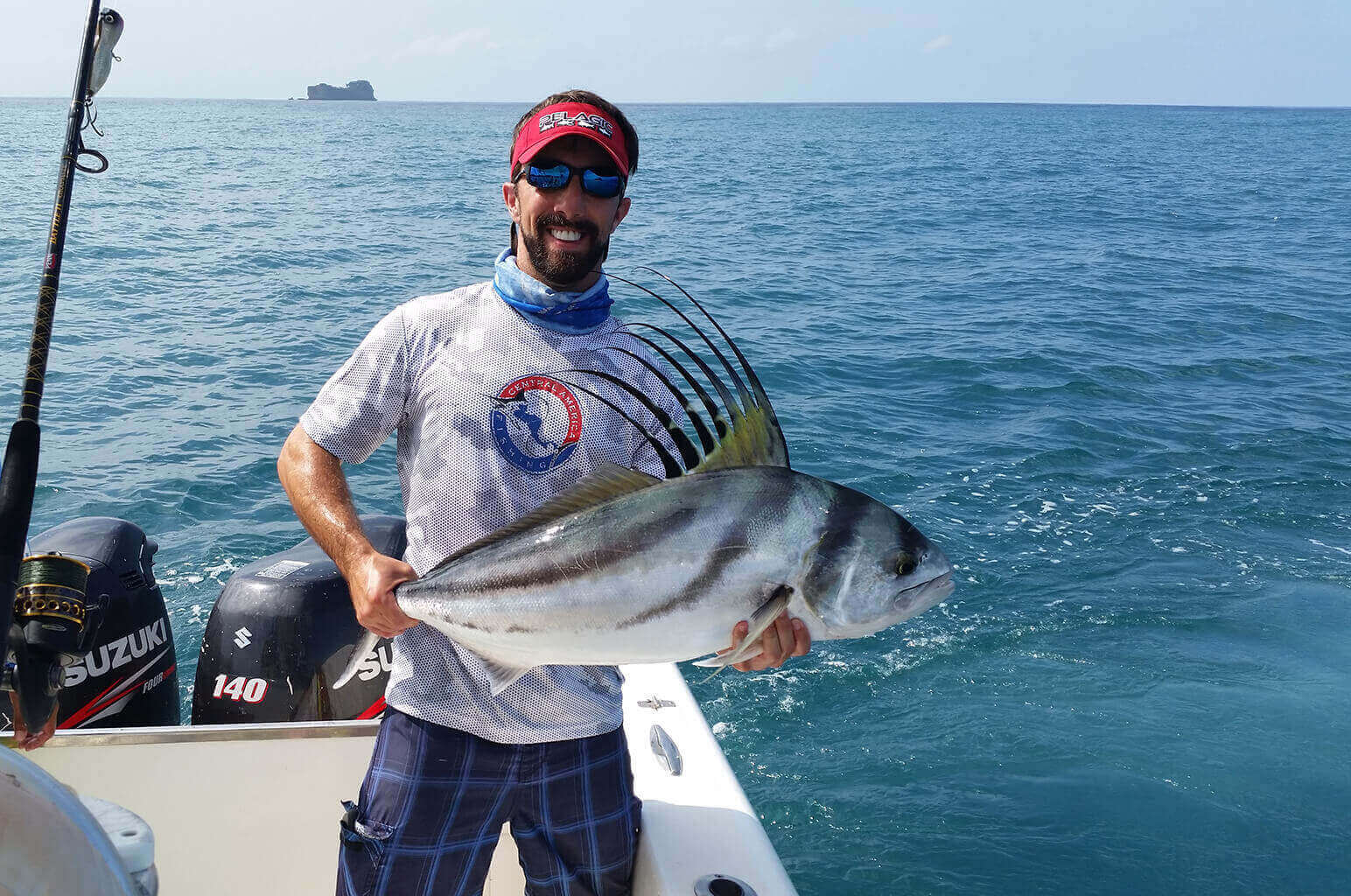
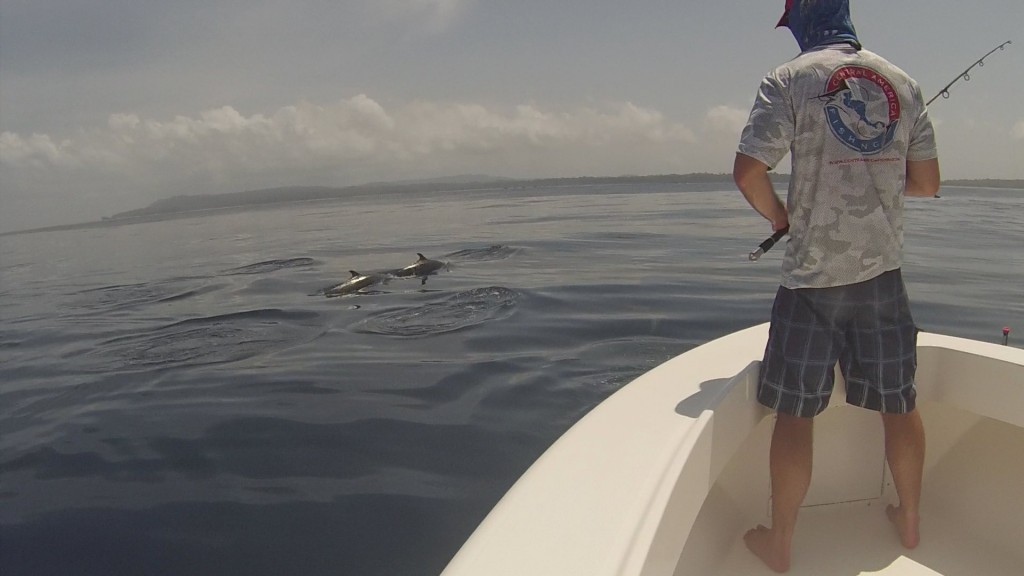
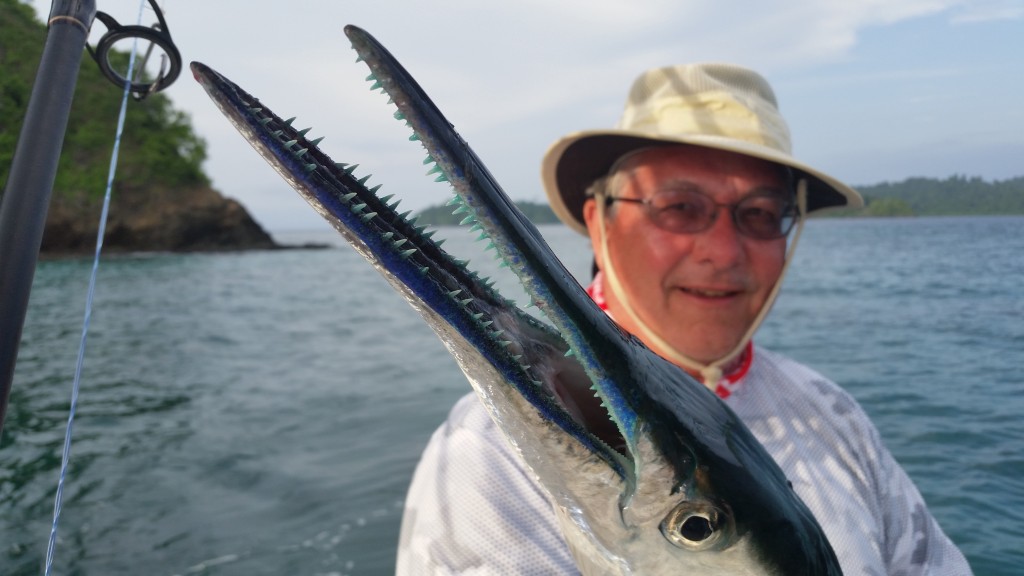
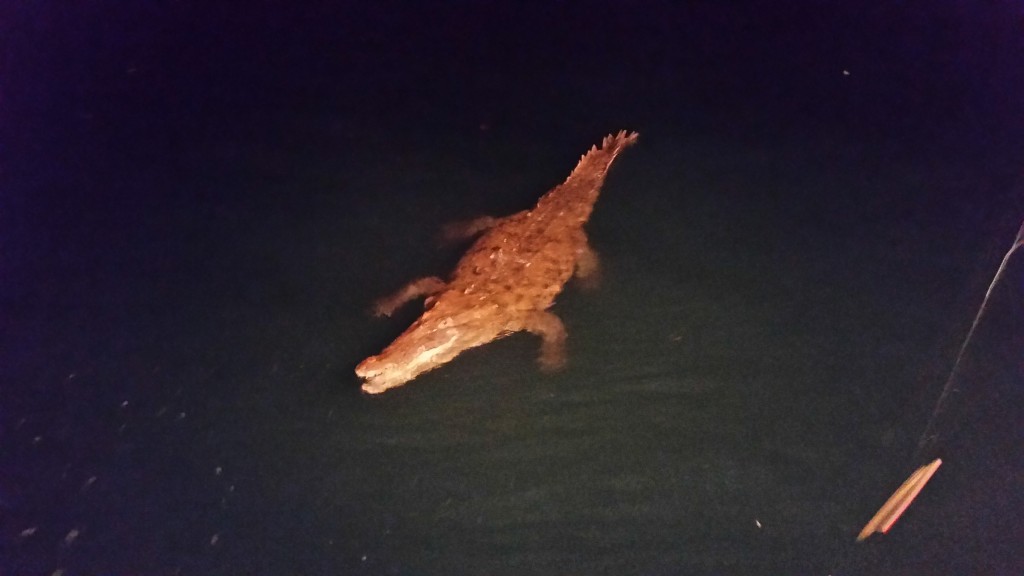
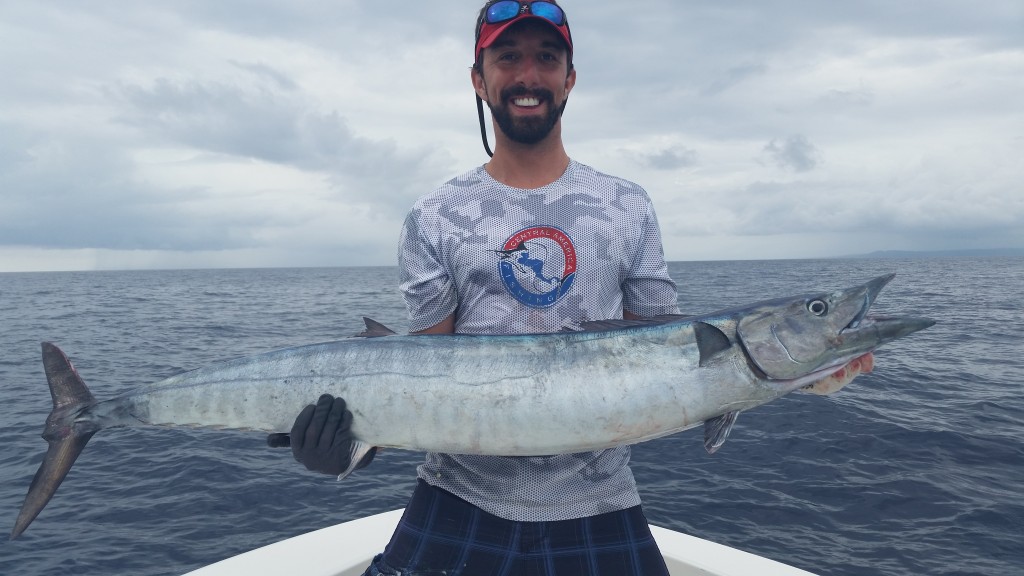
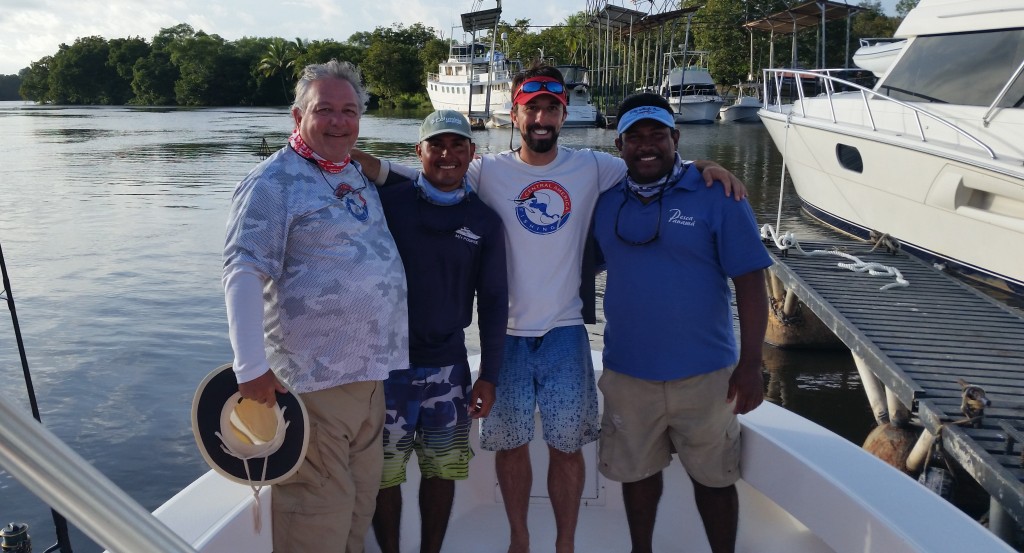
0 Comments